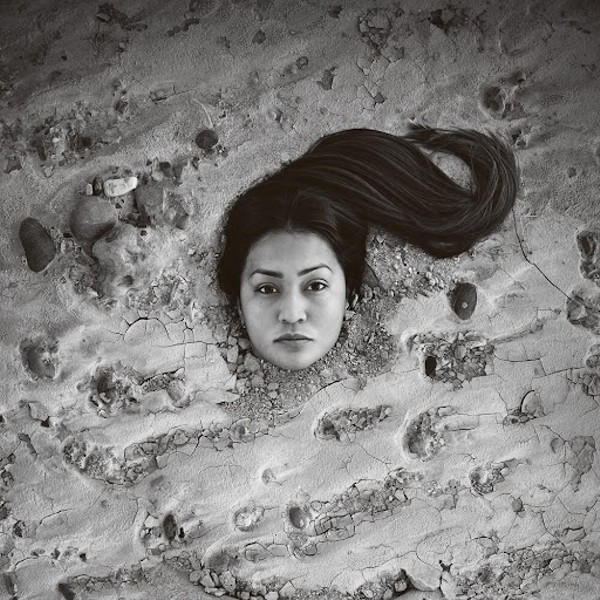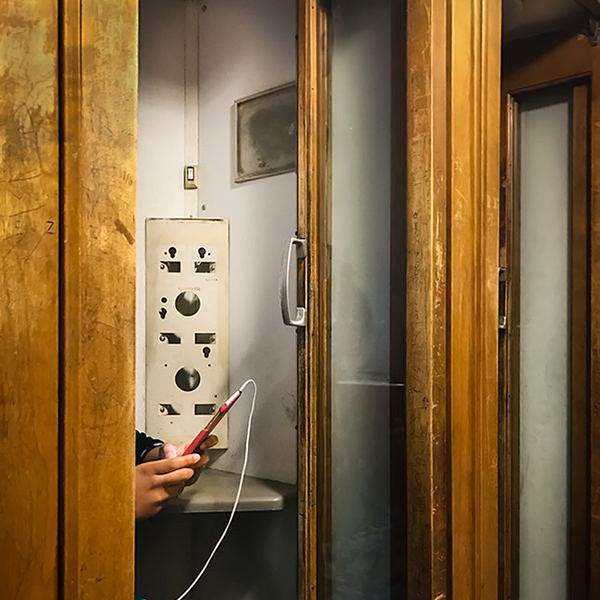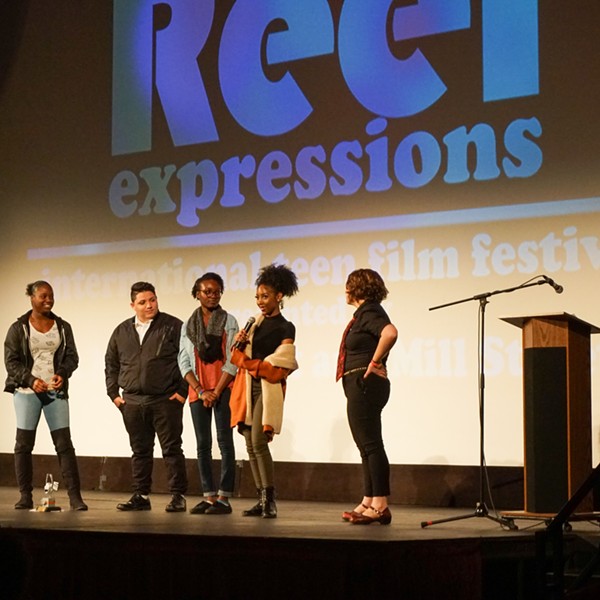Looking at John Yang’s pictures of Thacher Park is like going back in time—geologic time. Many of the New York City-based photographer’s images of the Indian Ladder Trail (a long-popular attraction in the family-friendly state park west of Albany) are such close-cropped details of the rock—striated, layered, chipped, and chunked as it is—that you couldn’t imagine where or when these pictures were taken. And the landscape views, though quite classic in their way, are rendered in such subtle, misty tones, that they, too, seem to be of another age and a distant geography.
This displaced quality is both the magic and the necessity of Yang’s photography, now hanging in a solo exhibition at the Albany Institute of History & Art. Without it, we’d just be looking at the thing he photographed. With it, we are transported.
Yang spent five years making and sequencing the 38 prints that comprise “Indian Ladder, A Lyric Journey,” which is a long time—since it took Mother Nature many millions of years to create his subject matter, it seems fitting that he would approach it slowly. Yang grew up in New York, and brings a distinct East-West sensibility to this work. In an 80-page, full-color catalog that accompanies the exhibition, he says: “I am, by upbringing, a Confucian. I am, by nature, a Taoist. I am, by outlook, a Puritan.” This amalgamation of devotion to family, cultivation of simplicity, selflessness, and strict morality seems to have served Yang well in pursuing his arduous and reflective photographic method.
Born in China in 1933, he began showing his pictures in New York galleries and museums in the 1960s; he worked for more than 20 years as an architect before retiring in 1978 and devoting himself fully to his art. Yang shares significant characteristics with a number of other Asian or Asian-American photographers: They work slowly, with large cameras; they make low-key prints, often emphasizing a very narrow tonal range within the black-and-white continuum; and they distill quiet images from simplified subjects—usually still life, the nude, or landscape. Examples of this type of subtle work are readily available from Japanese-born photographers (Hiroshi Sugimoto and Kenro Izu come to mind); Yang is among a group of lesser-known Chinese-American photographers working in this mode.
Visually, Yang’s work harks back to photographers of the American West—not Ansel Adams, or Minor White (with whom he studied) so much as the 19th-century greats William Henry Jackson, Timothy O’Sullivan, and Carleton Watkins. But, whereas they created their monumental works depicting subjects such as Yosemite and Yellowstone, Yang has almost arbitrarily chosen the Helderberg Escarpment (“It’s something I stumbled upon,” he says), made it his own, and given it back to us transformed.
Yang’s technique, as in all photography, is important in its specifics. The prints are all black and white, but Yang’s use of gold toner gives them a surprisingly broad range of colors. Some read as the neutral gray of an everyday gelatin-silver print, but the rest range from a deep eggplant to a rusty, almost orange hue. Within the individual prints, an overall warmth pervades (think of sepia), especially in the highlights. He uses a cobbed-together, 11-by-14-inch view camera—the kind you have to put a big, dark cloth over your head to look through— and contact-prints the oversized negatives on English printing-out paper: slow, purplish sheets that develop in sunlight and, through toning, render various degrees of opalescence. At the Albany Institute, the camera and Yang’s darkroom setup are the first things you see before passing through a door into the gallery that holds the Thacher Park pictures.
(This is both an advantage and a shame. Though Yang built the camera himself from spare parts, and though his printing process is archaic and laborious—and therefore fascinating—it is still the pictures that matter most, not the process of making them. Too many people think photography as an art form is somehow about the equipment; I would hate for the Institute to unwittingly further this impression by placing a crazy-looking camera and an old-fashioned darkroom at the entry of such a highly sophisticated exhibition.)
There is a diverse range of subjects and perspectives to the images. They can be categorized variously into different groups: grand views and intimate views; above the ledge and below the ledge; rocks; trees; water, ice and snow; looking up or down; and so on. Unique in the collection is a panoramic triptych made of three vertical views joined together, that looks out from beneath a wide overhang, past a narrow cascade, and into the distance of the valley beyond. At about 14 by 33 inches it is large for a silver print, and it has stronger shapes and contrasts than most of Yang’s other pictures, which tend to favor atmosphere over composition.
The heart of the group, nine prints that focus on the cliff walls exclusive of other content, is a reverent homage to the elements. “I love rocks,” Yang says, “and when photographing the cliffs along Indian Ladder Trail I tried to capture the rhythmic play between the wave-like striations and the abrupt vertical fractures of the Coeymans and Manlius limestone beds.” Yang does far more than capture that rhythm—like a classical composer, he gives it an orchestral voice. The cathedral-like spaces he has recorded nearly make religion out of geology.
















